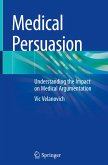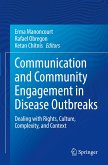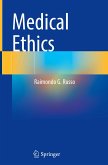When the COVID- 19 pandemic occurred, all the main communication systems of medical research have undergone an epochal change. Many online journals and magazines have tried to publish inherent works of this specific problem as soon as possible, soliciting and preferring them to others, thus changing the system of free acceptance of scientific works once. Moreover, the way to communicate these works has no longer occurred through standard Scientific Congresses but with other systems, websites/streaming and webinars or virtual conferences.
Now there is something systematic missing, which foresees that this may last in the future, in the post COVID-19 era (AC): the communication system of the medical sciences will be different from now on. There will be far fewer classical-style conferences like the ones so popular before COVID-19 outbreak (BC) but there will be more webinars, in streaming and virtual conferences.
This new book fits well in this period, creating a bridge between those who do research, how it is communicated, what are the classic communication methods and what is all the necessary background to communicate with new tools.
The book idea is based on the legacy left by Michael Faraday, the famous American chemist, who sensed how communicating what happens in science can make the difference between the success and failure of the research itself:
"A lecturer should appear easy and collected, undaunted and unconcerned"
"Lecturers which really teach will never be popular; lecturers which are popular will never really teach "
Michael Faraday, "Advice to lecturers", 1848
The volume approach is multidisciplinary and written by top experts in the field of communication and education.
It will be a useful tool for scientists in this moment of epochal change in medical communication.
Now there is something systematic missing, which foresees that this may last in the future, in the post COVID-19 era (AC): the communication system of the medical sciences will be different from now on. There will be far fewer classical-style conferences like the ones so popular before COVID-19 outbreak (BC) but there will be more webinars, in streaming and virtual conferences.
This new book fits well in this period, creating a bridge between those who do research, how it is communicated, what are the classic communication methods and what is all the necessary background to communicate with new tools.
The book idea is based on the legacy left by Michael Faraday, the famous American chemist, who sensed how communicating what happens in science can make the difference between the success and failure of the research itself:
"A lecturer should appear easy and collected, undaunted and unconcerned"
"Lecturers which really teach will never be popular; lecturers which are popular will never really teach "
Michael Faraday, "Advice to lecturers", 1848
The volume approach is multidisciplinary and written by top experts in the field of communication and education.
It will be a useful tool for scientists in this moment of epochal change in medical communication.








